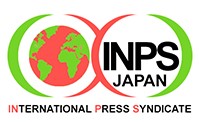Feature by Ramesh Jaura and Katsuhiro Asagiri
TOKYO (IDN-INPS) – Kennichi Suzuki is the Mayor of Ise, a city home to the Ise Grand Shrine – the most sacred Shintō shrine in Japan, dedicated to the sun goddess Amaterasu – where Prime Minister Shinzo Abe received the leaders of Canada, France, Germany, Italy, United Kingdom, the United States and the European Union on the occasion of the 2016 annual G7 summit in May.
The city – some 460 kilometres away from Tokyo – was the constituency of the late Yukio Ozaki with the pseudonym ‘Gakudo’, who served in the House of Representatives of the Japanese Diet for 63 years (1890–1953), and is still revered as the “God of constitutional politics” and the “Father of the Japanese Constitutional Democracy“.
The Ozaki Gakudo Memorial House – first established five years after his death and renovated in 2002 – commemorates the achievements of the statesman.
During the 1930s and early 1940s, as an independent politician, he defied the ‘Zeitgeist’ (the defining spirit of the times) and criticised the growing influence of the Japanese military. He was imprisoned during both world wars. But he was hailed as a political hero after World War II – for his relentless commitment to democracy, disarmament and human rights until his death.
His profound commitment to democratic values was underscored by his tolerance for the views of others – so much so that when in 1921 the father of a young man whose attempt to assassinate him was foiled, approached Ozaki to apologize in person. Ozaki responded with a 32-syllable ‘tanka’ poem: “If it was patriotism that drove the young man; My would-be assassin deserves honour for it.”
It was at the entrance to the historic Ozaki Gakudo Memorial House that Mayor Kennichi Suzuki received us for an interview – accompanied by Takako Doi, President of Gakudo Kofu, a not-for-profit organisation launched in 2006 and tasked since 2010 not only with administration of the Ise City-supported Memorial House, but also a wide range of educational activities.
Mayor Suzuki said there was a historical dimension to the G7 summit being held in the Ise-Shima region, also called the Shima Peninsula – comprising areas of eastern Mie Prefecture in or around Ise-Shima National Park, which include the cities Ise, Toba, Shima, and parts of the town of Minami-Ise: Not only because it would be another seven years before Japan hosts G7 summit next time. But also – and that is important – because Ise was the constituency of late Ozaki.
Though there is every reason for Mayor Suzuki to feel proud of having welcomed leaders of six powerful countries, he remains modest and tells us: “Both in political and corporate activities, the bottom line is whether those activities serve the interests of the people.”
As the Mayor of Ise – called the ‘Holy City’ because it hosts the Grand Shrine, also known as Ise Jingu – he said he always keeps at the back of his mind that whatever he does contributes to the values the Grand Shrine embodies and uphold legacy of international peace and human rights for which Yukio Ozaki dedicated his entire life.
This applies to the immigration issue as well. It does not suffice to have international conventions such as the Universal Declaration of Human Rights (UDHR) or the 1951 Convention relating to the Status of Refugees and its 1967 Optional Protocol relating to the Status of Refugees. It is of critical importance that principles enshrined in international agreements are adhered to in practice and human rights are not violated.
“Constant efforts have to be made to make sure that the spirit behind human rights is understood and bequeathed to generations as long as human beings exist on earth.”
For this reason, Mayor Suzuki was impressed by German Chancellor Angela Merkel’s stance and expressed his appreciation to her for the ‘welcome’ sign to a spate of refugees, fleeing civil war in Syria and other Middle East countries.
He was also impressed by U.S. President Barack Obama. Though, he said: “I cannot help comparing two Obamas: Obama when he just became the U.S. President (and was awarded the Nobel Peace Prize soon after) – and Obama now, in the last year of his second tenure in office. He must have gone through tough times all these years.”
While Mayor Suzuki highly appreciates Obama’s decision to visit Hiroshima (nearly 71 years after the U.S. dropped atomic bombs on that city and on Nagasaki), reading news reports from the U.S. and opinions about his administration, his impression is that the president is acting in a difficult political environment.
Nevertheless, he believes that the U.S. President’s speech in Hiroshima on May 27 would open a new chapter. There was much concern in Japan whether a U.S. President would visit Hiroshima while some Hibakusha are still alive.
“With average age of Hibakusha being such that before long we would have to face a situation where a direct account of atomic bomb experience would get increasingly difficult.” Therefore, Obama’s visit to Hiroshima was “highly appreciated as this would allow us to move forward to a new chapter”.
But what does Mayor Suzuki feel as a Japanese national, who has not reached Hibakusha’s age, about opinions that there is no reason to regret the devastation caused by atomic bombs dropped on Hiroshima and Nagasaki, because these were necessary to end the war.
“I do not understand such an argument,” responds Mayor Suzuki. “With the start of a war, there is a moment where things completely change from telling people that killing is a bad thing to praising and even commending people for killing enemies.”
He continued: “However, even during a war, there is a difference between soldiers who are killed on a battlefield while fighting ‘enemy’ soldiers and the civilian population including newly-born babies killed by an atomic bomb or otherwise. By the same token, terrorists infiltrating civilian population and killing innocent children cannot be tolerated. Therefore, I do not understand that there are people who argue in favour of the decision to drop an atomic bomb on the civilian population.”
Asked whether he would have liked Obama to come up with an apology, Mayor Suzuki says: “It is difficult to answer this question. I could imagine that the people of Japan would have been pleased to hear Obama apologise, but I understand that in his position as President he has to represent the U.S. national interest.” In view of this, despite what the people in Japan feel, “we should appreciate the U.S. Presidents’ decision to come to Hiroshima”, he says.
“So you think that it was good that Obama came to Hiroshima and met with Hibakusha though he did not express any regret or apology?” we asked.
“I understand that Obama’s visit to Hiroshima stirred debate in the U.S. and it also left a huge impact here in Japan. I attach utmost importance to the fact that people debated both in Japan and the U.S. Such debates might pave the way to the next stage,” said Mayor Suzuki.
The interview turned out to be a memorable encounter with the 40-year old Mayor who has been in office since November 2009. He expressed his views without resorting to political and diplomatic jargon but fully aware of the legacy of the late Ozaki and what the 2,000-year old Grand Shrine symbolizes. [IDN-InDepthNews – 04 August 2016]
Photo in front of late Ozaki’s statue: (left to right) Takako Doi; Mayor Kennichi Suzuki; Ramesh Jaura; Katsuhiro Asagiri. Credit: K Asagiri | INPS Japan


